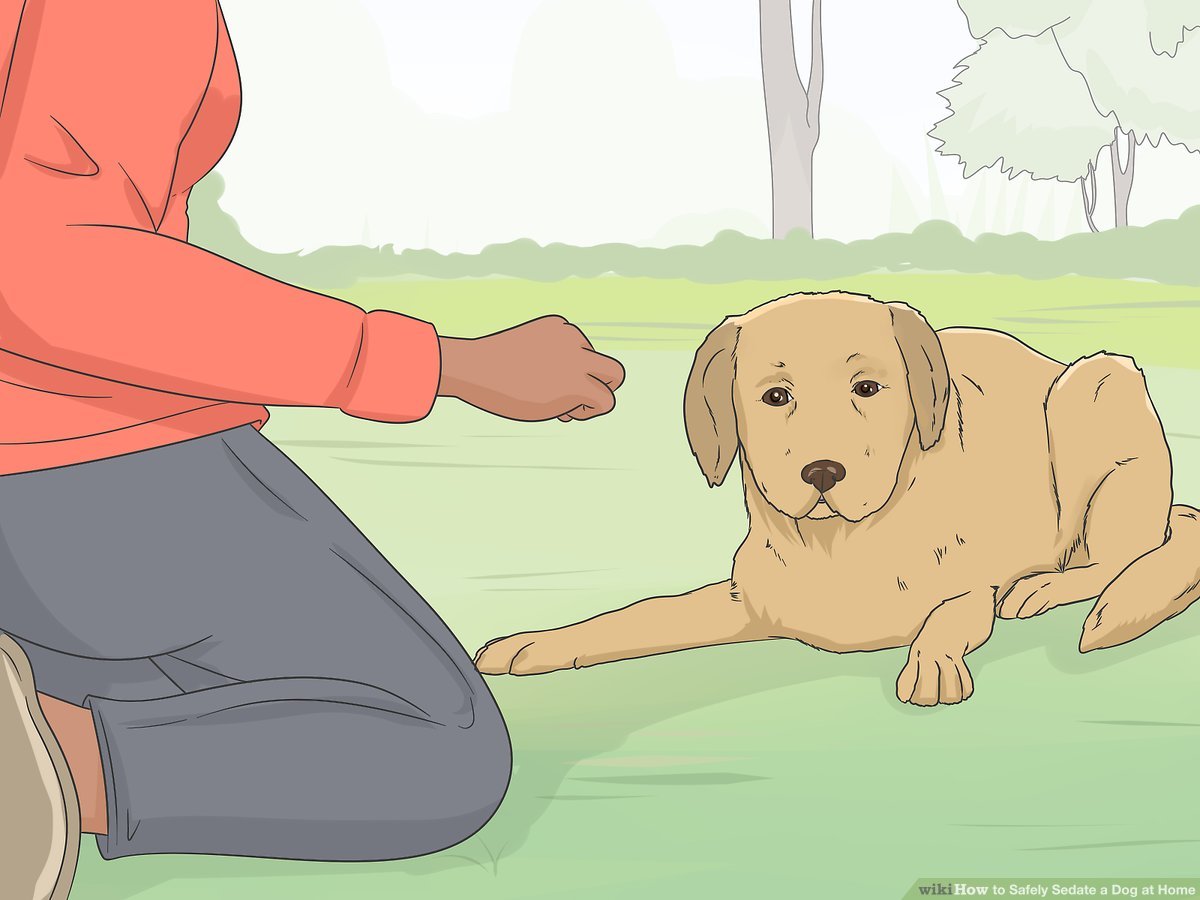Sedating your dog can be a helpful way to manage anxiety, travel stress, or grooming-related fear. However, it’s essential to approach dog sedation with caution and care to ensure the safety and well-being of your furry friend. In this article, we’ll explore the most effective and safe ways to sedate your dog, whether for a veterinary procedure, travel, or any other relevant situation.

Credit: www.wikihow.com

Credit: dogsbestlife.com
Understanding Dog Sedation
Before delving into the methods of sedating your dog, it’s important to understand the nature of dog sedation. Sedation involves using medication or natural remedies to calm and relax your dog, typically by reducing anxiety and inducing a drowsy state. The goal is to keep your dog calm and stress-free during specific events or situations. It’s crucial to note that dog sedation should only be done under the guidance of a veterinarian.
Consult Your Veterinarian
Consulting with a veterinarian is the first and most important step when considering sedating your dog. A veterinarian can assess your dog’s health status, behavior, and specific needs to recommend the most suitable sedation method. They can also prescribe the appropriate medication and provide guidance on dosage and administration. Always follow your veterinarian’s recommendations to ensure the safety and well-being of your dog.
Safe Sedation Methods
There are several safe and effective methods for sedating your dog. Here are some commonly used approaches:
Oral Medication
Oral sedatives prescribed by your veterinarian can be administered at home. These medications are available in liquid or pill forms and are often given in advance of a stressful event, such as traveling or fireworks displays. It’s important to follow the prescribed dosage and timing as instructed by your veterinarian.
Natural Remedies
Natural calming remedies, such as pheromone diffusers, calming collars, and herbal supplements, can help alleviate your dog’s anxiety. These options can be especially beneficial for dogs with mild to moderate anxiety and are generally considered safe when used as directed.
Professional Administration
For specific veterinary procedures or more complex sedation needs, your veterinarian may administer sedatives directly. This ensures precise dosing and close monitoring of your dog’s response to the medication.
Precautions and Considerations
While sedating your dog can be beneficial, it’s essential to consider the following precautions and factors:
- Health Status: Ensure your dog is in good health before administering any sedative medication. Pre-existing medical conditions should be discussed with your veterinarian.
- Dosage and Timing: Always follow the recommended dosage and timing for any sedative medication, and never exceed the prescribed amount.
- Monitoring: Keep a close eye on your dog after sedation, especially during the initial stages. Monitor for any adverse reactions or unusual behavior.
- Travel Regulations: If sedating your dog for travel, familiarize yourself with airline or transportation regulations regarding sedated pets. Some carriers have specific guidelines and restrictions.
Frequently Asked Questions Of How Do I Sedate My Dog
How Do I Sedate My Dog Safely?
If you find the need to sedate your dog, it is important to prioritize safety. Consult with your veterinarian to determine the appropriate sedation method and dosage for your furry friend.
What Sedatives Are Commonly Used For Dogs?
Veterinarians commonly prescribe sedatives such as Acepromazine, Benzodiazepines, or Tricyclic Antidepressants to calm dogs in various situations. However, it is crucial to follow the guidance of your veterinarian for proper usage.
Are There Natural Sedatives For Dogs?
Yes, there are natural alternatives that can help calm your dog. Options include aromatherapy, herbal remedies, pheromone sprays, or gentle music. Always consult with your vet before using any natural sedatives.
How Long Does It Take For Dog Sedatives To Work?
The onset time of sedatives can vary depending on the type and dosage administered to your dog. Typically, it takes around 30 minutes to 1 hour for the sedative to take effect. However, discuss with your vet for specific details regarding the sedative prescribed.
Conclusion
Safely and effectively sedating your dog involves careful consideration, appropriate medical guidance, and responsible administration of sedative methods. Always prioritize your dog’s well-being and consult with a veterinarian to determine the best approach for your specific circumstances. By following professional advice and best practices, you can help ensure a calm and stress-free experience for your beloved canine companion.



